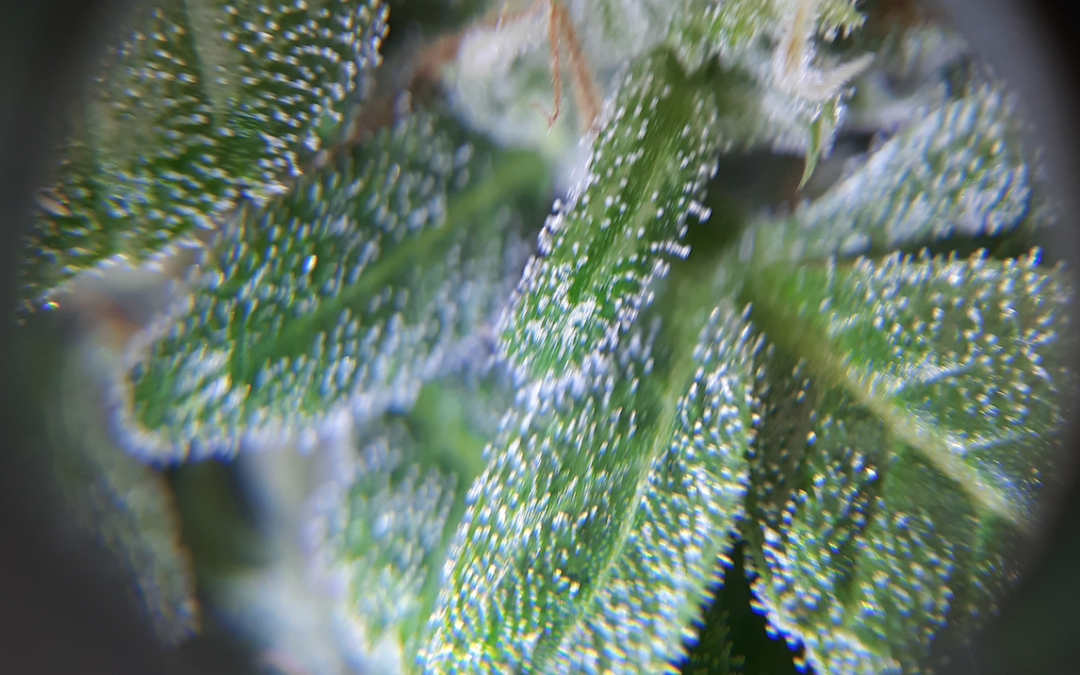Cannabidiol (CBD)
“Can I get high from CBD?” I get asked this by patients all the time.
The short answer is no. Tetrahydrocannabinol, or THC, is the most common active phytocannabinoid found in cannabis and it is primarily responsible for the psychoactive effects or “high” experienced after cannabis consumption.
While cannabis products containing THC will have psychoactive effects, CBD alone is non-psychoactive and will not produce the same intoxicating effects when isolated from the cannabis plant. Even CBD products containing trace amounts of THC (e.g., some oils and full-spectrum hemp products), will not contain enough THC to produce psychoactive effects.
What is cannabidiol (CBD)?
Cannabidiol, or CBD, is a major phytocannabinoid naturally occurring in the cannabis plant, accounting for a large portion of its cannabinoid content. Although CBD can affect body processes through its interaction with the endocannabinoid system, it does not produce psychoactive effects.
It is believed that CBD may help improve the function of the ECS since phytocannabinoids, including CBD, mimic the activity of endocannabinoids produced by the body. Several studies have examined the benefits of CBD for a variety of health conditions including epilepsy, neuropathic and multiple sclerosis-related pain, cancer, and anxiety.
What is the endocannabinoid system (ECS)?
The endocannabinoid system (ECS) is a neuromodulatory and biochemical communication system found throughout the body within the central and peripheral nervous systems. It is comprised of cannabinoid receptors (CB1, CB2), endocannabinoids, and enzymes.
The ECS plays an important role in maintaining homeostasis, monitoring the body for endogenous and environmental changes, and releasing neurotransmitters to organs, tissues, and systems as needed.
What are cannabinoids?
Endocannabinoids or endogenous cannabinoids are lipids produced by the body that function as natural chemical messengers. They interact with cannabinoid receptors, CB1 and CB2, found within the endocannabinoid system (ECS), with the main purpose of helping the body to maintain homeostasis.
Phytocannabinoids are plant-based cannabinoids naturally occurring in the cannabis plant that imitate the activity and actions of endocannabinoids within the ECS. There are over 100 active phytocannabinoids identified in the Cannabaceae family of plants.
What is the difference between full-spectrum Hemp and CBD?
Full-spectrum hemp products contain CBD, THC, and several other cannabinoids. CBD products, however, are made by isolating the CBD content from the cannabis plant, removing THC and other cannabinoids.
Full-spectrum CBD products produced from industrial hemp may contain trace amounts of THC, a concentration of 0.3% or less, which is not enough to produce psychoactive effects or make a person “high”. Products containing isolated CBD will not contain THC or other cannabinoids.
Are there side effects from taking CBD tincture or capsules?
Although CBD is generally considered safe and few people experience side effects, some reported side effects associated with CBD use include fatigue, diarrhea, and changes in appetite and weight when consumed.
It is important to note, however, that many of these adverse effects occur only when CBD is taken in doses higher than those generally available over-the-counter.
Also, CBD could potentially interact with certain medications that are cytochrome *P450 substrates. Be sure to check with your physician if taking medications and supplements to limit any potential negative interactions.
When is the best time to use CBD?
In my practice, I recommend CBD as topical use for pain related to muscle, tendon, and joint. I usually recommend a series of acupuncture (once a week, for 5 weeks) and application of CBD lotion or salve at home to temporarily reduce pain and aches.


